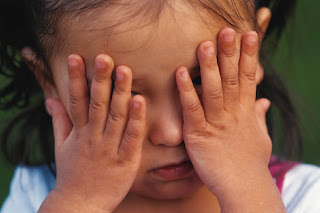- Increased separation anxiety
- Reluctance to go to sleep
- Nightmares
- Reluctance to go to school/babysitter
- Regression to less mature behavior
- Acting out (e.g., sibling spats;
tantrums)
- Physical symptoms (e.g., tummy aches,
head aches, etc)
- Inability to concentrate
- Withdrawn behavior and sad countenance
- Children detect parental anxiety, so
admit your concerns while stressing your confidence in being able to cope
with the problem.
- Emphasize the sources of support the
family has received during the disaster, is currently receiving, and can
count on down the line (e.g., extended family, friends, community
resources, etc.). The goal is to help the child feel taken care of.
- Encourage your child to talk about the
situation and his/her feelings
- Treat expressed fears with respect
rather trying to reduce them by being dismissive.
- Reassure them over and over that they
are safe.
- Provide information about any ways you
will try to avoid such traumas in the future if possible.
- Congratulate them on any behaviors
that were helpful during the crisis or helpful in its aftermath.
- Understand
that it’s natural for children to focus on how the disaster affected THEM
(e.g., lost toys) rather than understanding the magnitude of the problems
the adults face.
- Answer questions honestly, including
admitting “I don’t know.” In
age-appropriate detail, describe the steps being taken to deal with any
losses.
- Re-establish routines as soon as
possible, even if they have to vary from those in place before the
disaster. Children are comforted by
being able to predict events.
- TAKE CARE OF YOURSELF. Children can
detect parental distress, so finding ways to make yourself feel better
will pay off in dealing with your children—including helping you be
patient with them.
- Find some fun things to do—movies,
play-dates, trips to the park. Such
occasions will not only distract your child from his/her anxiety and fear,
but also provide evidence that life goes on and can still be joyful.
- Avoid exposure to newscasts or printed
materials that show frightening images.
- Keep promises.
- Find ways to help others who have
experienced losses. Helping others
reinforces the idea that people help each other, thereby increasing a
child’s sense of security.
- American Academy of Child and Adolescent Psychiatry: https://www.aacap.org/AACAP/Families_and_Youth/Facts_for_Families/FFF-Guide/Helping-Children-After-A-Disaster-036.aspx
- FEMA: https://www.ready.gov/kids/parents/coping
- Mental Health America: http://www.mentalhealthamerica.net/children-cope-with-tragedy
Linda
Linda Acredolo, Ph.D.
Co-founder, the Baby Signs® Program
and
Professor Emeritus, UC Davis

















